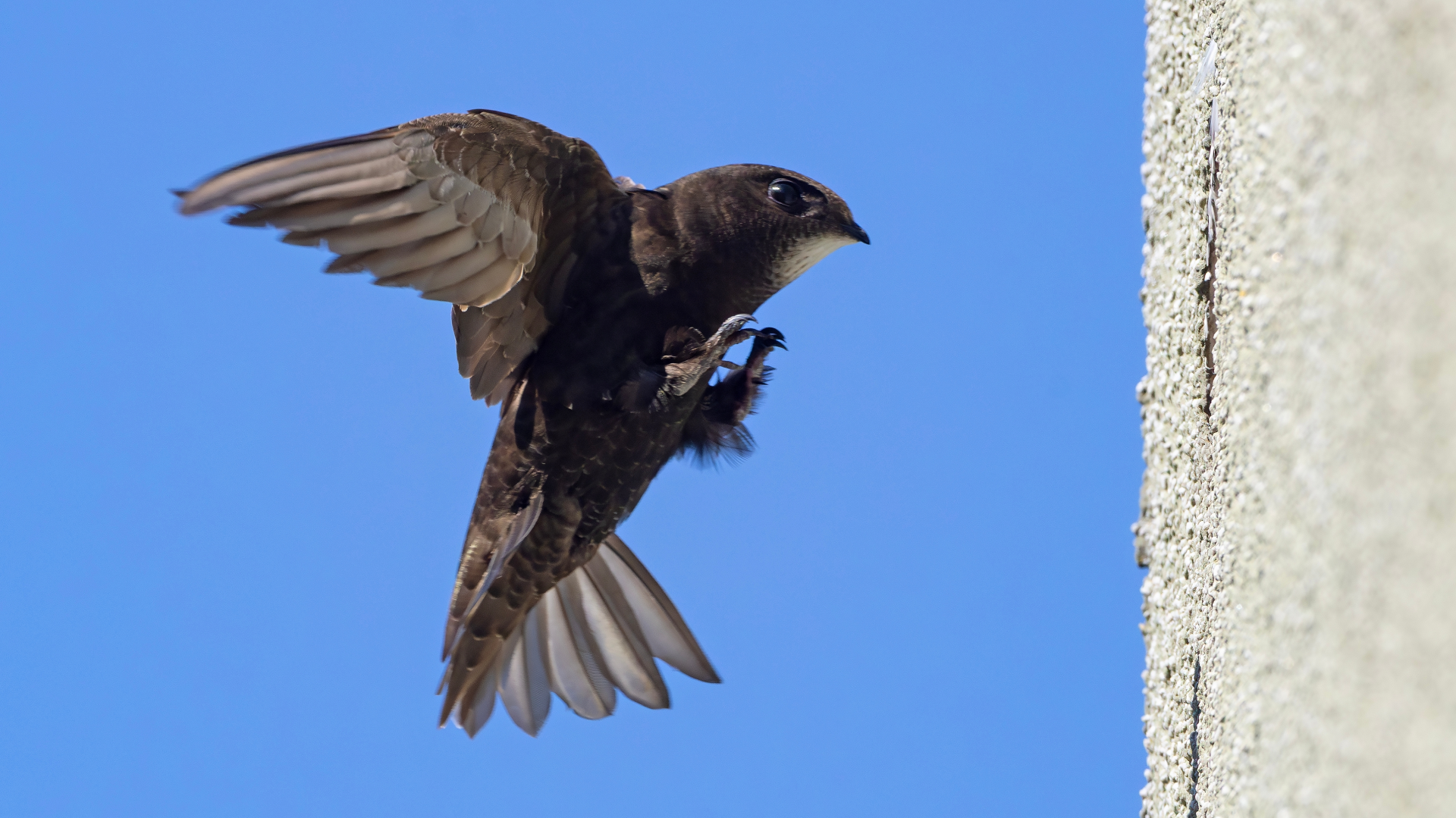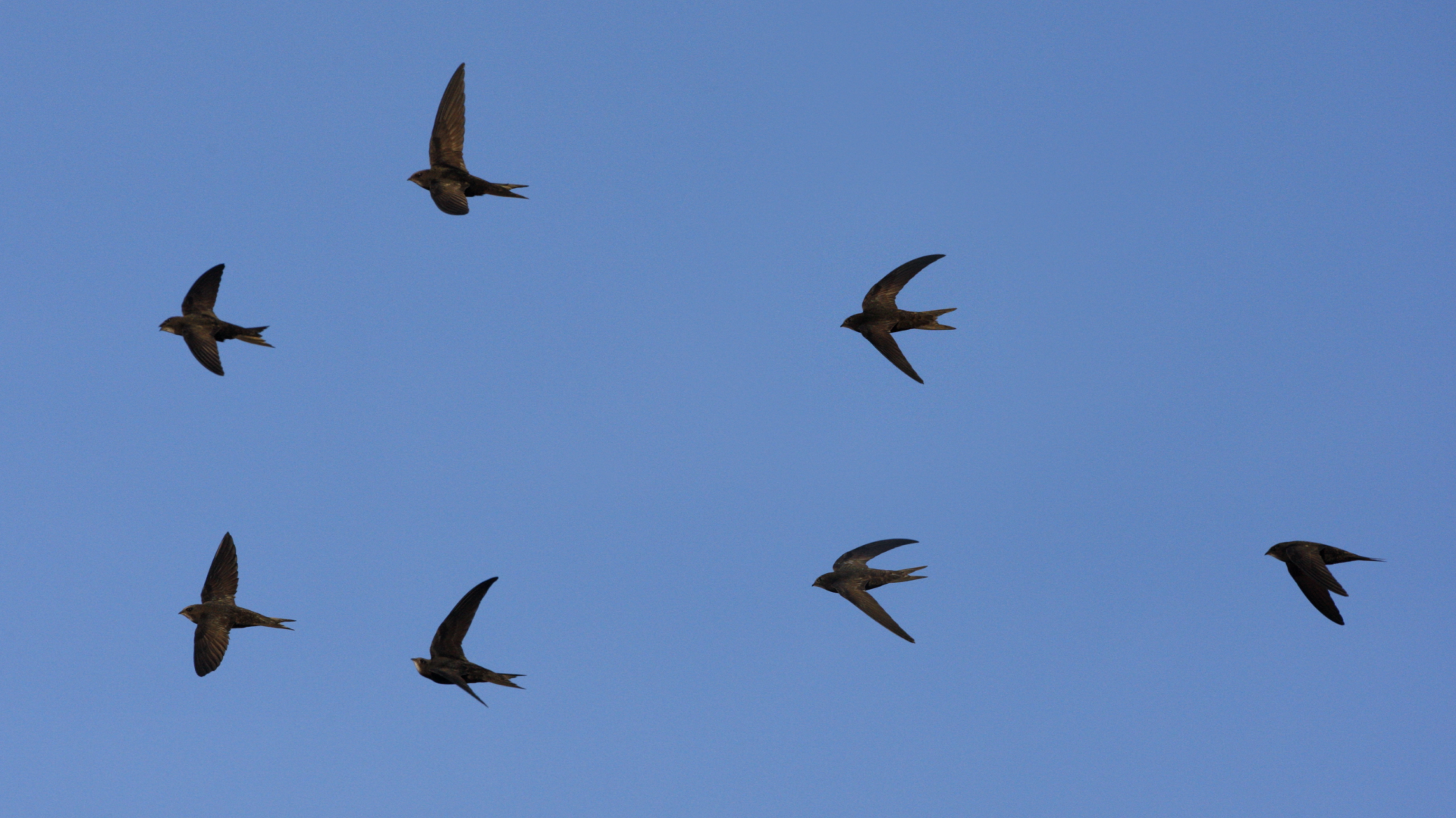If, when looking at the sky, you see a flock of birds resembling heavy metal swallows, fully dressed in black and larger than usual, you are watching common swifts (Apus apus). Like music bands, they like to show their high pitches so that everyone can hear them down here.
The format does not deceive—when there are “black scythes” in the sky, this means swifts are hunting. The flocks, often composed of dozens of individuals, are so noisy that they hardly go unnoticed. Its signature chant – a high-pitched, shrill chirp – is easily recognised on warm afternoons, echoing between quick aerial stunts.
This summer species can be seen all over the Portuguese territory between March and October. Some birds will only be in transit to other places, such as the Northern European countries, but others stay here during the warmer months.
Colonies form, often in urban settings, taking advantage of crevices in buildings and old structures to nest. Originally, these birds used cliffs and natural cavities, but the proximity of cities brought them new opportunities for shelter.






